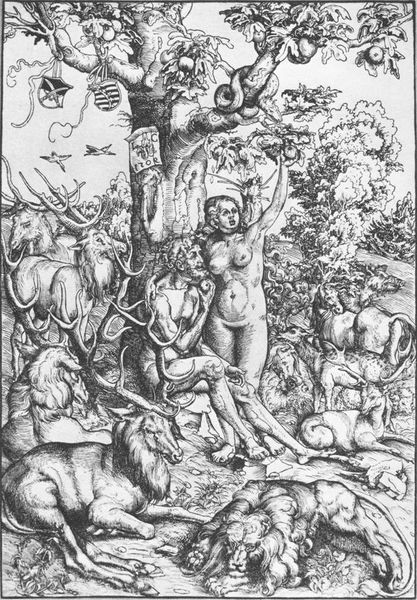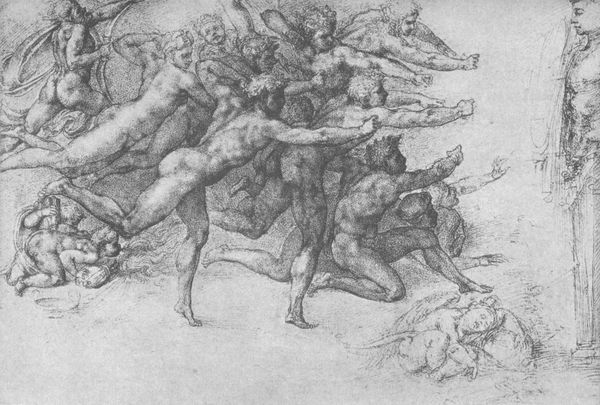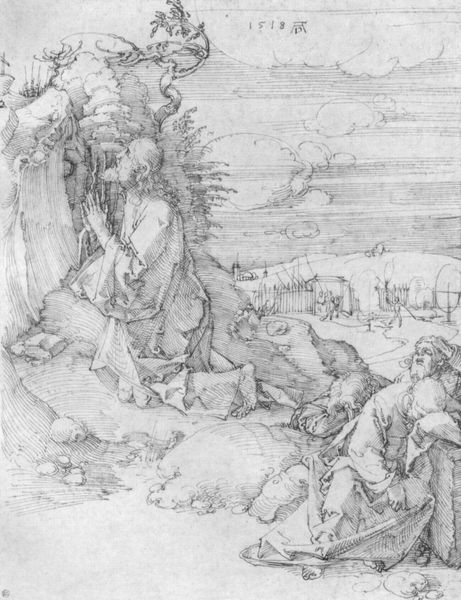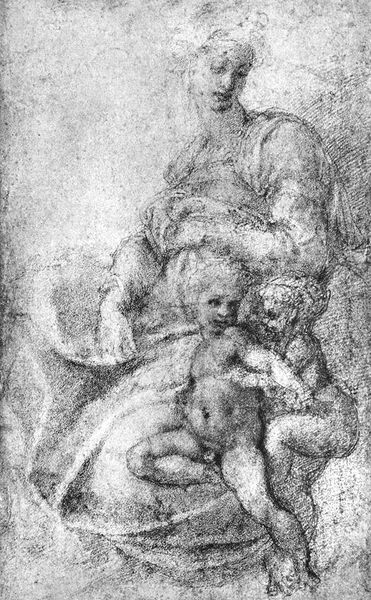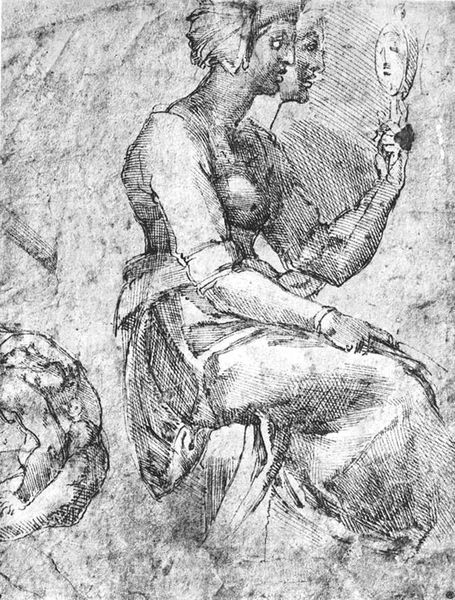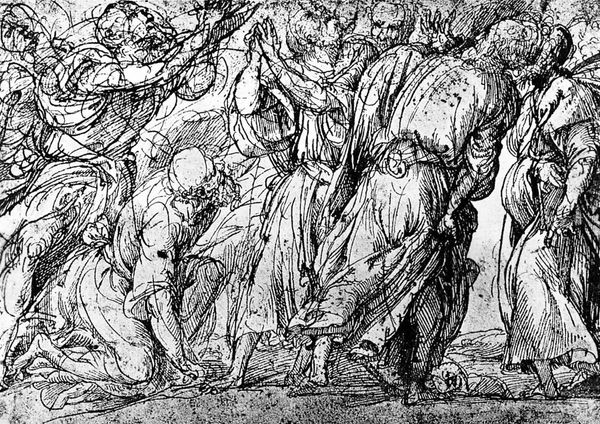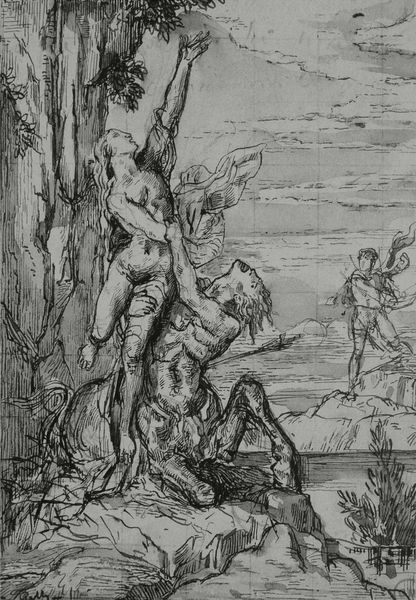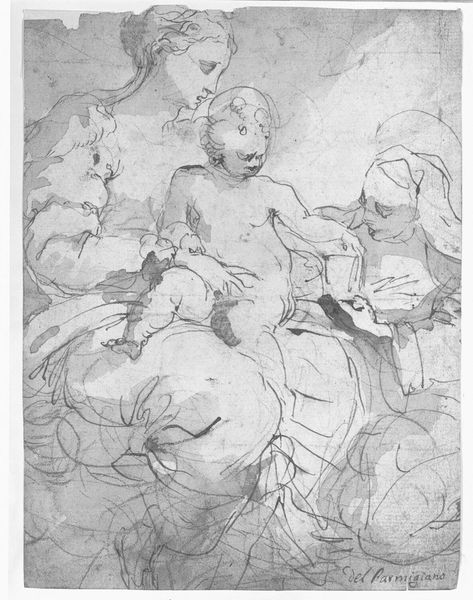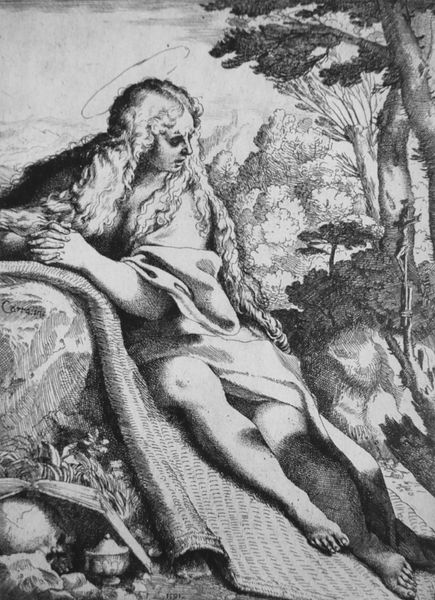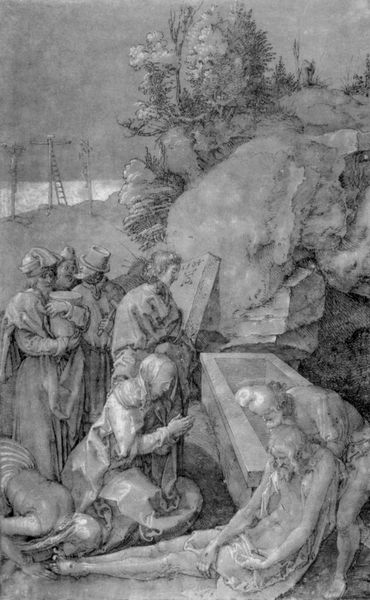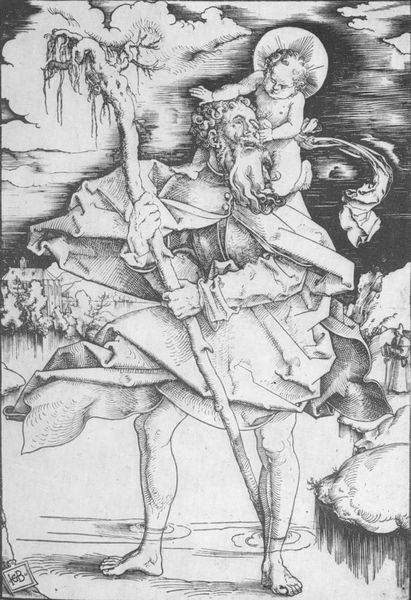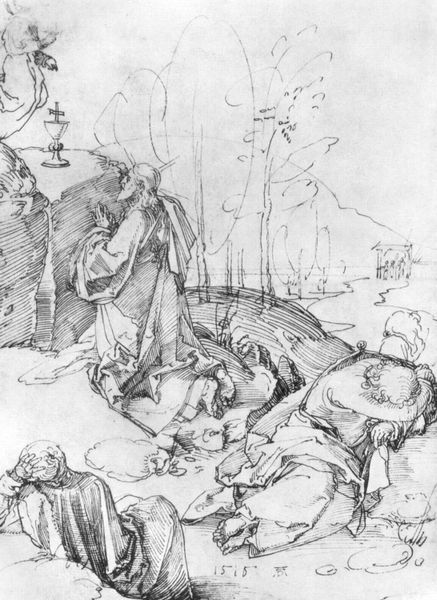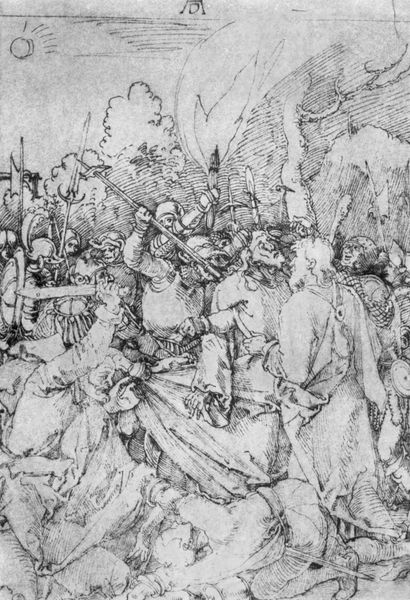
drawing, print, engraving
#
drawing
# print
#
pen sketch
#
landscape
#
figuration
#
pen-ink sketch
#
christianity
#
northern-renaissance
#
engraving
#
christ
Copyright: Public domain
Editor: This is Albrecht Dürer's "The Penance of St. John Chrysostom," made in 1496. It's an engraving, and the detail is incredible. I'm struck by how Dürer depicts the female figure—the textures of the rocks and the delicate lines used for her body. What do you see when you look at it? Curator: I'm particularly interested in how the material conditions of printmaking influence the work's reception and its potential critique of religious themes. This engraving isn’t simply representing a biblical story, it’s actively engaging with a burgeoning market for reproducible images. Editor: So, you're saying that it being a print changes how we view the subject? Curator: Precisely. Consider the labor involved in creating the metal plate, the choices in line thickness, and the implications of mass distribution. The affordability and accessibility of prints challenged the Church’s monopoly on religious iconography and served a growing merchant class. Editor: That’s fascinating! I hadn't considered the socioeconomic impact of printmaking itself. How does the choice of materials—the ink, the paper—play into that? Curator: Absolutely, the specific qualities of those materials determine how the image is received. The texture of the paper, the quality of the ink – these were variable, creating different experiences of the same image. Are we looking at a luxury item, or something more commonplace? These are crucial considerations. And how does Dürer's detailed figuration and Northern Renaissance style situate it within that context? Editor: This makes me rethink the entire piece! Seeing it not just as a religious image, but also as a product of specific labor and materials changes everything. Thank you! Curator: Indeed, analyzing the material reality of art objects offers crucial insights.
Comments
No comments
Be the first to comment and join the conversation on the ultimate creative platform.

